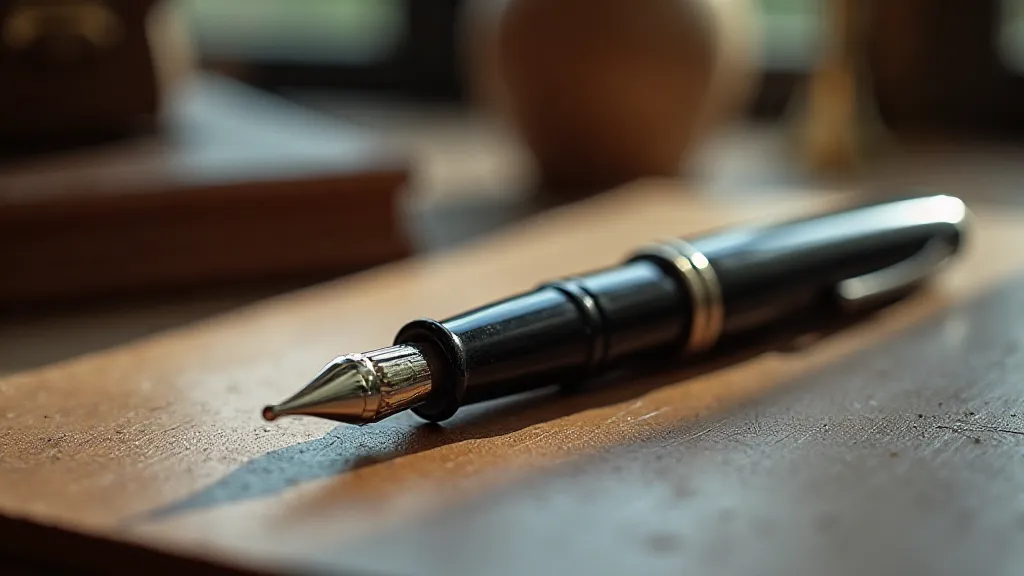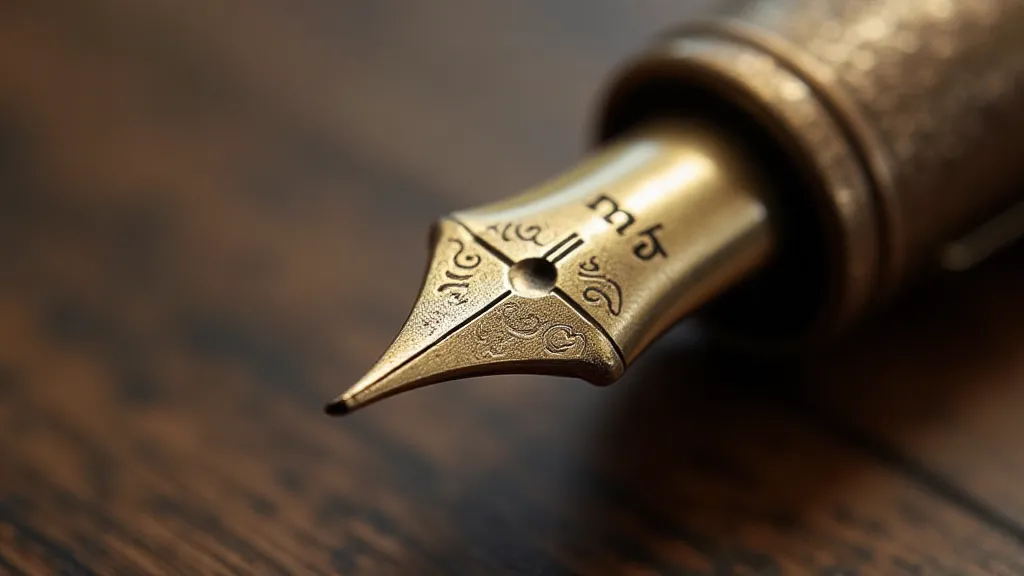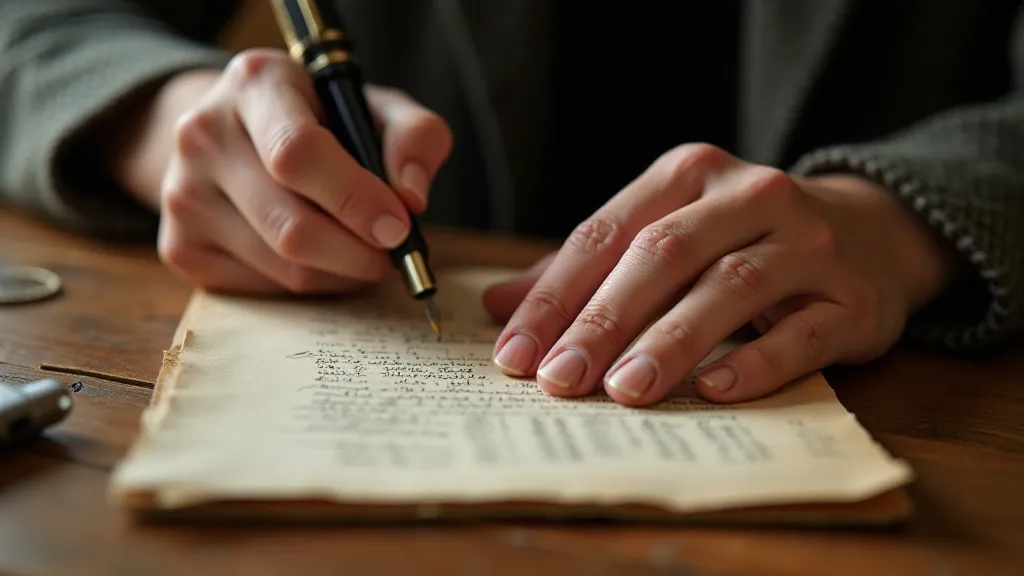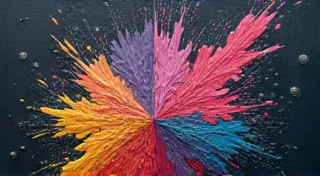The Ink's Epilogue: How a Restored Pen Can Re-Ignite a Lost Passion
There's a peculiar magic that radiates from vintage objects. It’s not simply about age, but about the stories held within, the hands that have touched them, the lives they’ve witnessed. This is especially true of writing instruments—fountain pens in particular. They aren’t just tools; they are extensions of the soul, vessels for thoughts, dreams, and memories. And sometimes, a seemingly lifeless pen, patiently waiting in a dusty box, can hold the key to unlocking a forgotten passion.
My grandfather, Arthur, was a writer. Not a published author, mind you, but a writer nonetheless. He filled notebooks with poetry, short stories, and reflections on the world around him. His tools of the trade were simple: a comfortable chair, a cup of strong coffee, and his beloved fountain pen – a Parker 51, a gift from my grandmother on their wedding day. After he passed, the pen, along with countless notebooks, found their way into a box in the attic, a quiet testament to a life filled with words.

The Dormancy of Dreams
My own writing life stalled years ago. The demands of career, family, and the general chaos of modern existence gradually eroded the time and mental space needed to create. The joy of crafting a sentence, of weaving a narrative, felt distant, almost a memory of a different person. I’m not alone; many creatives experience periods of dormancy, where the well seems to run dry.
Recently, while clearing out the attic, I stumbled upon that box. Among the faded notebooks and yellowed photographs, there it was: the Parker 51, resting quietly as if waiting for a signal. The black lacquer was scratched, the clip was bent, and the sac, the rubber component that holds the ink, had long since hardened and cracked. It was in dire need of repair.
I’d always admired my grandfather’s skill with tools. He was a meticulous man, a carpenter by trade, and he took pride in restoring antique furniture. The thought of attempting to repair his pen felt both daunting and strangely comforting. It felt like a connection to him, a way to step back into a part of my past I thought was lost.
A Journey of Restoration
Pen repair is a delicate art. It requires patience, a steady hand, and a surprising amount of specialized knowledge. Disassembling a vintage fountain pen isn't simply about taking it apart; it's about understanding its construction, the function of each component, and the historical context of its design. The Parker 51, for instance, was revolutionary for its time, employing a unique cap and barrel locking system that remains admired by collectors today.
The process itself was a lesson in humility. I ruined a few sacs before finding one that fit correctly. I learned about different types of ink sacs – rubber, hard rubber, and celluloid – and the challenges each presents. I spent hours researching online forums and watching restoration videos, absorbing the wisdom of experienced pen repairers. Each small success – a properly seated section, a smoothly turning filling knob – felt like a personal victory.
Beyond the technical aspects, the restoration process provided a unique opportunity to appreciate the craftsmanship of a bygone era. These weren't mass-produced objects churned out on an assembly line. They were the result of skilled artisans taking pride in their work, using materials chosen for their quality and durability. The intricate details – the carefully milled nib, the precisely fitted components – spoke of a dedication to excellence that is often lacking in today's disposable culture.

More Than Just Ink
After several weeks of careful work, the Parker 51 was finally restored. It wasn’t perfect; the scratches remained as a reminder of its history, but it wrote again. The nib, once stiff and reluctant, now flowed effortlessly across the page, leaving a trail of rich, dark ink.
Holding that pen, feeling the familiar weight in my hand, I felt a wave of emotion wash over me. It wasn’t just about the pen; it was about my grandfather, about my lost passion, about the enduring power of creativity. It was a tangible connection to the past, a reminder of who I was and who I could be again.
The act of writing with that restored pen was transformative. The words flowed more easily, the ideas felt more vibrant. It wasn't just that the pen wrote well; it was that the act of restoring it had cleared a space within me, a space for creativity to flourish. The physical act of repair had, in a way, repaired a part of my own soul.
The Collector's Eye and the Writer's Soul
Collecting vintage pens isn’t simply about acquiring objects; it’s about preserving history, celebrating craftsmanship, and connecting with a community of passionate enthusiasts. There's a vast and fascinating world of vintage pens to explore – from the elegant Art Deco designs of the 1920s to the sleek modern classics of the mid-century. Each pen tells a story, a testament to a particular era and the cultural trends that shaped it.
But even if you aren't a collector, the appeal of vintage pens lies in their ability to evoke a sense of connection to the past. They are a reminder that quality and craftsmanship still matter, and that there is a beauty and elegance in simplicity and functionality. And, as I discovered, they can be powerful catalysts for rediscovering a lost passion.
Restoring my grandfather’s pen wasn’t just about fixing a broken object; it was about rekindling a flame. It was a reminder that even when the ink seems to have dried up, there's always the possibility of a new chapter, a fresh perspective, and a renewed sense of purpose. Sometimes, all it takes is a little restoration to bring those stories back to life.






